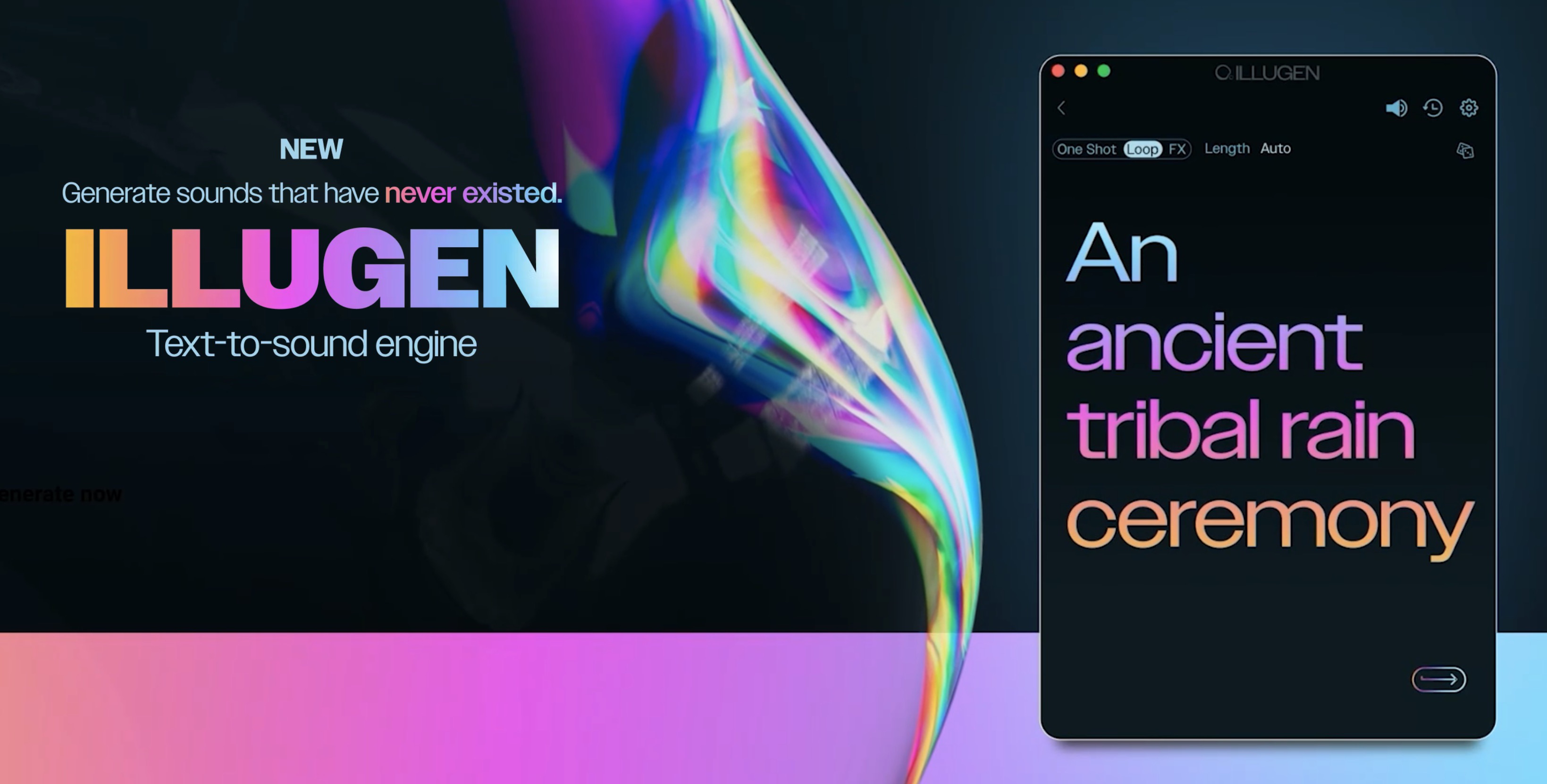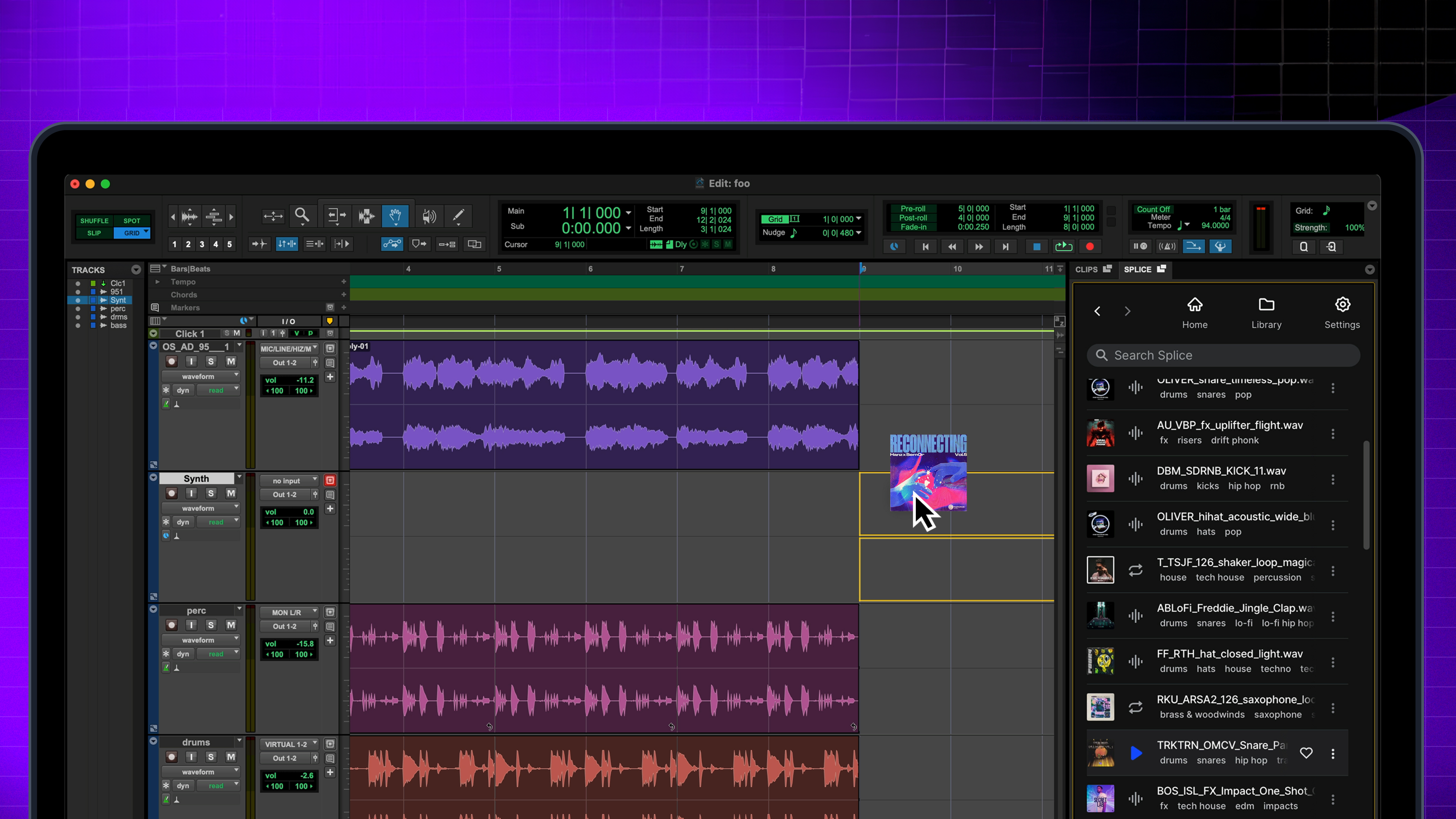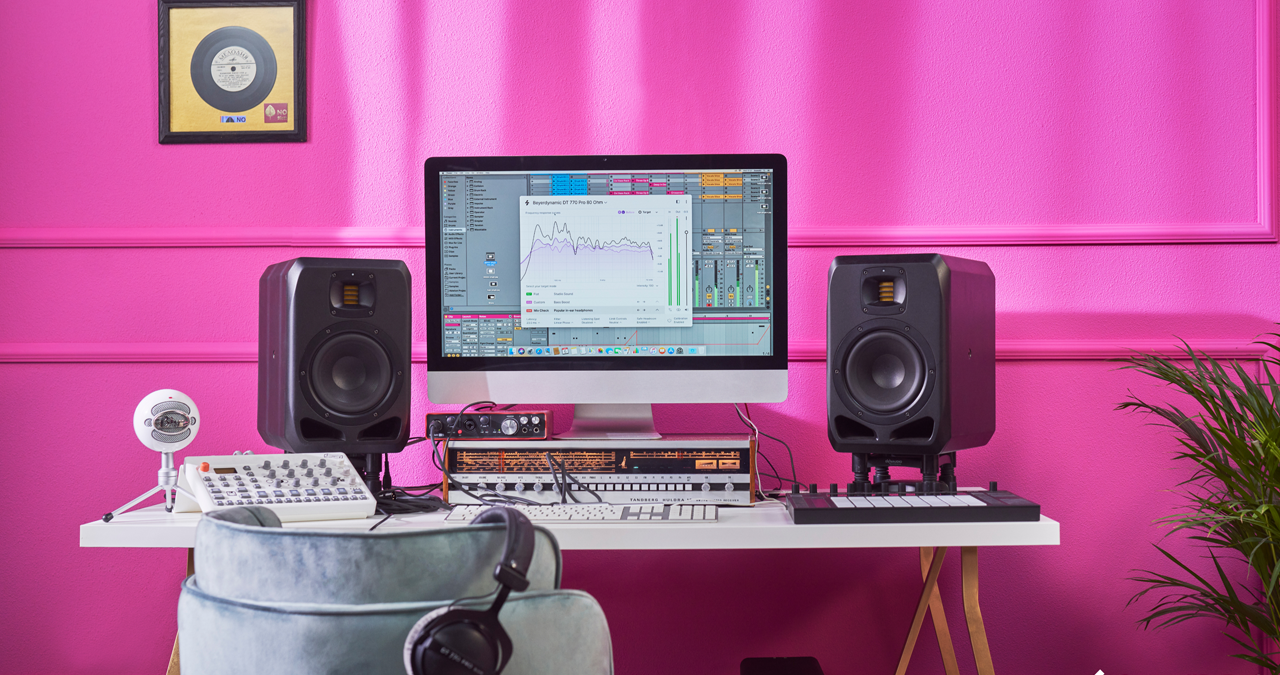“As a musician, I don't want to spend time and energy scrolling through endless lists of samples. I don't think that's creative”: Output’s AI-powered Co-Producer picks samples for you, but is it streamlining workflows or outsourcing creativity to AI?
We speak to Output CEO Gregg Lehrman about the company's AI-assisted digital crate-digger designed to speed up sample discovery

At the intersection of artificial intelligence and music creation there are two schools of thought. On one side, we have platforms like Suno and Udio that threaten to replace the process of music-making with the click of a mouse.
These AI-powered music generators, trained without permission on copyrighted work, conjure up sterile imitations of real songs in less time than it takes you to open an empty Ableton project. Write a prompt, press a button, get a song: no creativity needed.
On the other end of the spectrum, there are companies developing AI-powered tools designed to augment musicians’ and producers’ creative process, not replace it - whether that’s by providing them with new sounds, instruments and voices to work with, making tasks like mixing and mastering more efficient, or even helping them learn how to use their gear. We’ve even seen machine learning fuel the development of stem separation, most notably employed in creating a ‘new’ Beatles song from archival recordings.
Sample-based music creation has skyrocketed in popularity over the previous decade, as platforms like Splice have offered beat-makers affordable access to massive libraries of royalty-free sounds, many of them even making it into chart-topping songs. As AI-assisted music-making has seen such explosive growth, the technology has begun to radically transform the way that we sample.
While a handful of companies have explored the development of products that use generative AI to create samples from scratch - most notably Waves’ recently released Illugen - the most popular use cases for AI in sampling are sample discovery and organization. There are simply so many sounds available to the modern producer, whether that’s through sample libraries, subscription platforms, or their own collections, that for many of us, finding the needle in the haystack is becoming an unmanageable task.
Output claims that it has the solution. Launched in March, Co-Producer is an AI-powered, subscription-based plugin that listens to your project, analyzes its musical content and suggests samples that might gel musically with the material you already have, its selections guided by text prompts provided by the user. It’s AI-assisted digital crate-digging for the Splice generation.
Place an instance of Co-Producer on your master channel, play four bars of your track through the plugin, enter the relevant key signature and type in a description of what you’re looking for, whether that’s a vocal hook, drum loop or one-shot piano chord. The plugin responds with a list of samples that – in theory – should work with your project, automatically transposed and time-stretched to match its key and tempo. You can audition these within the plugin, then drag-and-drop any winners to your timeline.
Want all the hottest music and gear news, reviews, deals, features and more, direct to your inbox? Sign up here.
“It starts with an LLM,” Output CEO Gregg Lehrman tells us, when we ask for an explanation of the role that AI plays under Co-Producer’s hood. “The language model enables us to really understand what somebody is typing in. You can type something as basic as ‘clean electric guitar’, or you can ask for ‘guitar for a rainy day’, and we have an understanding of what you’re looking for, even if it’s not been tagged.”
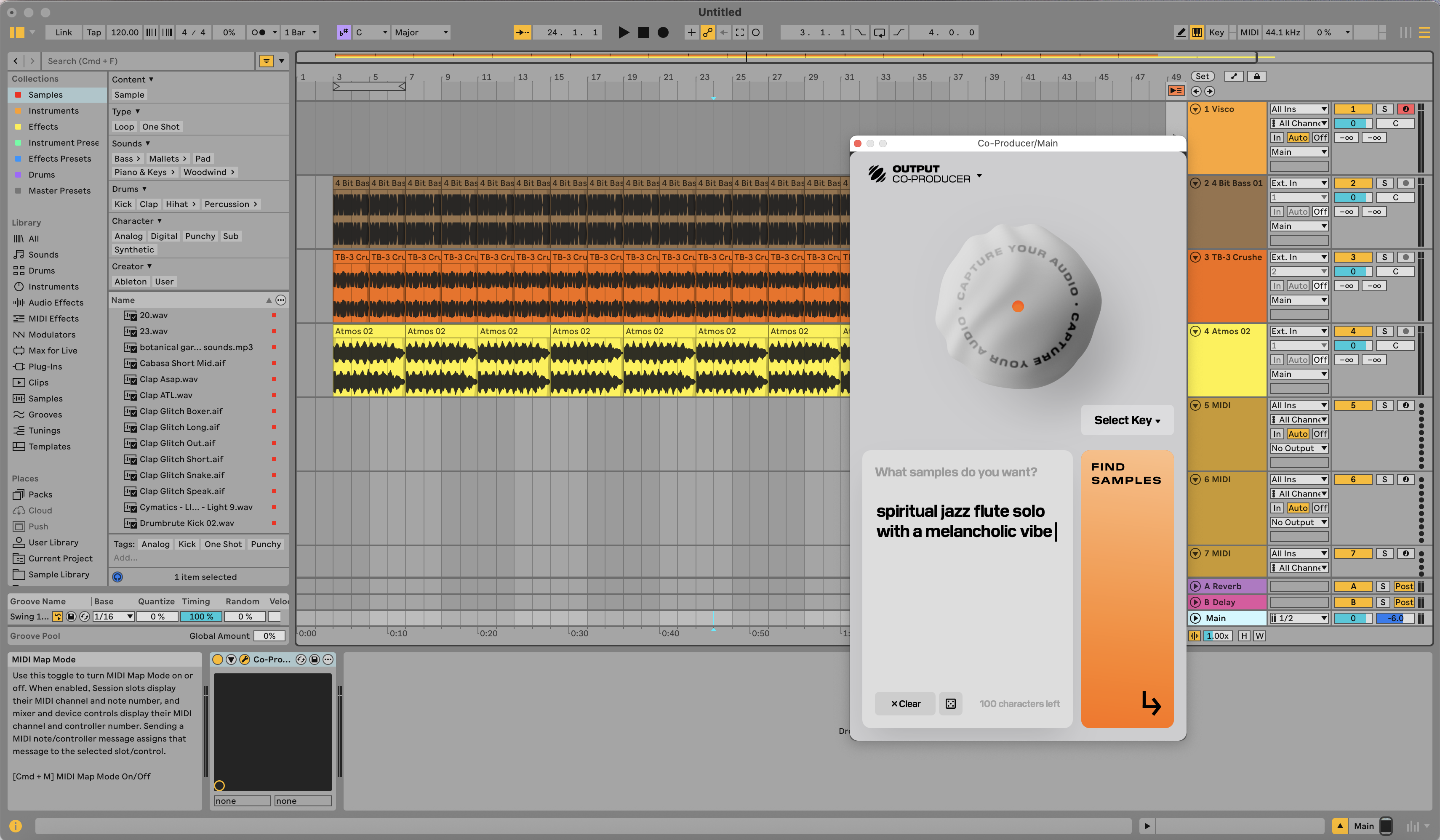
Output’s large language model - the same type of artificial intelligence algorithm that’s behind platforms like ChatGPT - works in tandem with the company’s audio analysis engine to connect its understanding of the prompt with its analysis of the project it’s working with. “It’s trying to understand what is happening from a rhythmic and harmonic standpoint, and then that’s allowing us to find what we think are the most complementary samples,” Lehrman says.
But what makes a “complementary” sample? You might assume that Co-Producer attempts to find sounds that are similar to the material it’s shown, but Lehrman says that similarity is only part of the equation, and that Co-Producer’s algorithm is designed to discover samples that improve or enhance a track by working around what’s already there: a melodic loop suggested by the plugin wouldn’t exactly match the rhythm in your drum part, for example, but it might fill out the gaps in the beat.
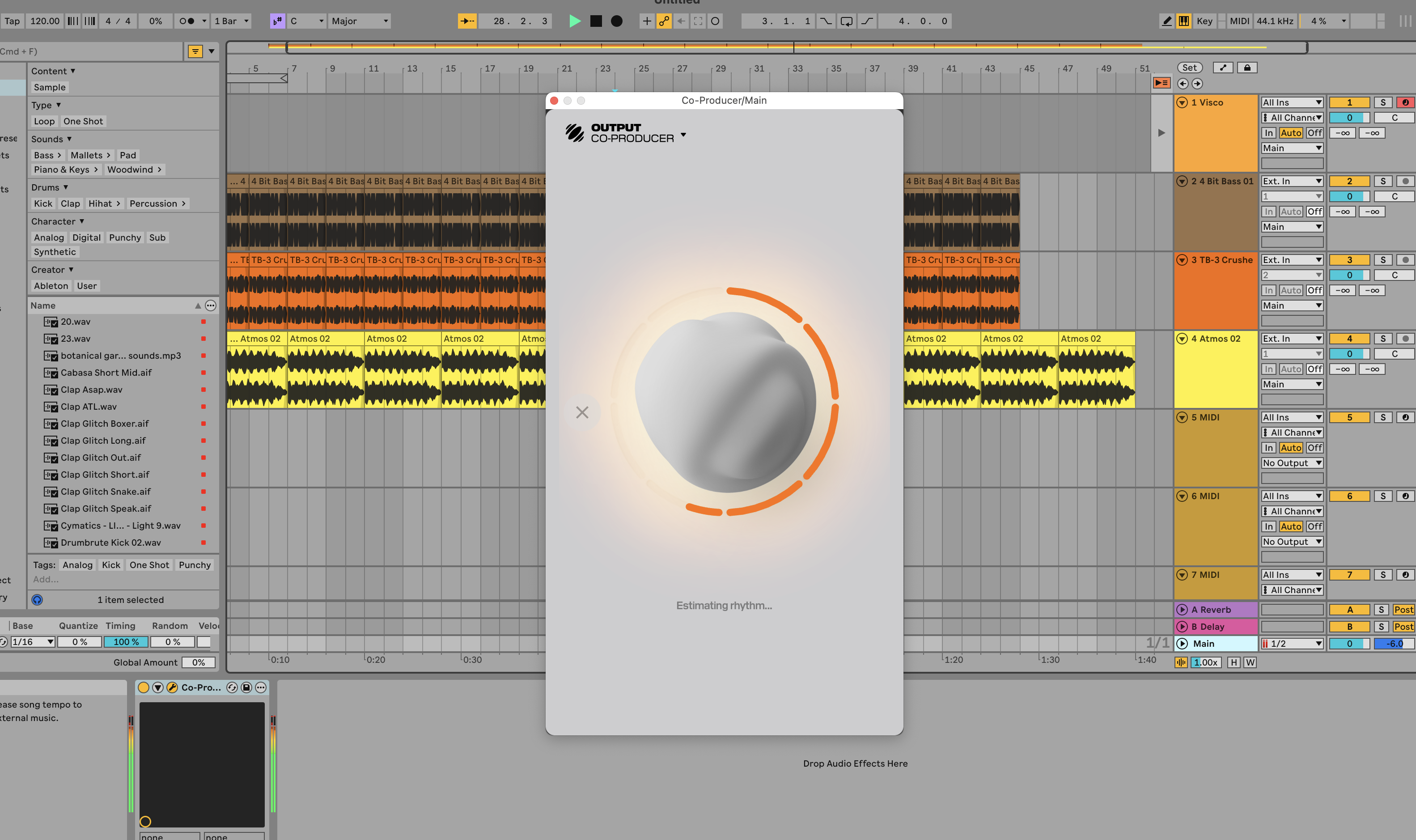
“The more granular you go, the better the results,” Lehrman says, pointing out that Co-Producer gives users the opportunity to rate suggested samples with a thumbs up or thumbs down. “Every time you give us feedback, we’re using that to optimize the system, and the benefit of an LLM is that we can convert that to musical terminology. What does a rainy day sound like? It’s kind of cheesy, but maybe it’s more minor chords. Maybe it’s a slower BPM.”
“We can go even further than that: what would the timbre sound like? Maybe it’s a darker instrument, or maybe it has reverbs where the high end is rolled off. Maybe it’s moody electronic guitars played through tube amps, I don’t know. We’re being very specific in taking the emotion from the LLM and converting it into specific music theory and production techniques. It’s taken a couple of years of work to get that.”

We were curious just how deep Co-Producer’s musical analysis could go. Can the plugin pick out melodic loops that aren’t just in the same key as a given chord progression that it’s analysed, but actually gel with it on a harmonic level, with each note of the melody landing on the appropriate chords? “It is that sophisticated,” Lehrman says. “It knows exactly what you’re doing from a progression standpoint and what notes would be cool to hit, and it’s trying to find the best matches we have in the catalogue.”
The catalogue in question is Output’s sample library, a continuously expanding collection of sounds that also features samples licensed from other sound design companies like Minimal Audio, Wavetick and Black Octopus Sound. That library always remains in the background, however: aside from the AI-assisted search, there’s no way to browse the sounds available to you in a conventional sense, as you would do with a traditional sample library.
To us, this seems like an oversight: if we’re paying a monthly subscription to access a library, we’d like to be able to browse all of the samples available to us at once. Why not implement Co-Producer’s AI analysis and sample discovery alongside an ordinary browser to give people the best of both worlds?
“We thought about it, but honestly, that exists already,” Lehrman says. “If you’re just looking for a big sample library that you can go through, there are a dozen companies that have that. If we’re not doing something a little new and different, what’s the point in doing it?”
It seems likely that this decision was motivated by a desire to differentiate Output’s AI sample discovery tool from Splice's AI-assisted search function, Create, launched in 2023. Now integrated into both Pro Tools and Studio One Pro, Splice’s Search with Sound feature analyzes music on the DAW timeline before suggesting compatible samples from its library, much like Co-Producer.
How does Lehrman think Co-Producer sets itself apart from what Splice is offering? “It’s a few things,” he says. “First of all, we’re in every single DAW out there. With Search with Sound, if you’re not in a compatible DAW, you have to export an audio file, drag it on to your desktop, drop it into Splice, listen to external samples and drag those back in. It’s not a great workflow.”
Lehrman also points to the fact that unlike Splice, Co-Producer doesn’t use a credit-based system that limits the amount of samples customers can use on a monthly basis. In return for a monthly fee of $9.99, Co-Producer’s users can download an unlimited amount of samples from its library.
“I think credits suck, I really do,” Lehrman adds. “Credits are built for companies, not for consumers. When you’re in the creative process, you can’t try things out, because every time you drag something in, you’re paying for a credit. That’s the last thing you want to do when you’re in the creative flow.”
Though it’s a contentious design choice, the absence of a browser is aligned with the fundamental motivation behind Co-Producer, which is to help producers circumvent the often time-consuming process of searching through a colossal sample library for the right sound.
“Our tools are meant to inspire people, to help them focus on the fun parts of music-making,” Lehrman says. “As a music-maker, I don't want to spend time and energy just scrolling through endless lists of samples. I don't think that that's creative.”
While for some, picking out samples can be a laborious task, for others, it’s both a rare talent and a fundamental element of the creative process. Gifted samplists like J Dilla and DJ Shadow spent months digging through record crates before identifying the sounds they used to craft their tracks, patiently developing an ear for samples that had the potential to be transformed into something new.
By listening through thousands of records and choosing only the samples that spoke to them – rather than letting AI choose samples it deems “complementary” – artists like these developed a unique sound, imprinting their taste and personality on the music they made.
By outsourcing that process to AI, aren’t we stripping the creativity out of the entire affair? “I don’t disagree with what you’re saying, but a lot of this depends on where you are in the process,” Lehrman responds.
“If I’m starting a song, crate-digging is the coolest thing. I’ve got a blank canvas and I’m going to go and find something that inspires me, and then I’m going to make a beat on top of it. But if I have a track that has six elements already - and I’m like ‘man, it’s just not there yet, what the heck am I missing?’ – it’s an annoying process of scrolling through samples that are sometimes in the wrong tempo, sometimes in the wrong key, and that part to me is not all that creative.”
"As a music-maker, I don't want to spend time and energy just scrolling through endless lists of samples. I don't think that's creative"
“In that scenario, the crate-digging is not the exciting part, because I’m just flipping through samples until I hear my song in a better state,” Lehrman continues. “And with Co-Producer, you still have to do that: when we look at our users’ searches, they might still go through 200 samples to find what they’re looking for, but at least they don’t have to go through 200,000 samples to find what they’re looking for. I just want the stuff filtered out that’s never going to work.”
Lehrman’s keen to emphasize that Output doesn't aim to replace any aspect of the creative process with artificial intelligence, but instead to streamline it, in an effort to help people be more creative, not less. He even admits that the company previously developed its own generative AI tool that creates samples from scratch, but ultimately chose not to release it.
“We had some really cool technology that we basically canned and said, ‘what’s the point?’” Lehrman says. While AI music generation gradually becomes more commonplace, even finding its way into plugins from established brands, Lehrman maintains that Output is committed to developing tools that enhance our creativity, rather than supplanting it.
“Suno and Udio and these other companies are making tools for people that are not interested in the creative process. That’s the opposite of what we’re trying to be,” Lehrman concludes. "Output is a company built for people that want to be creative, that want to actively make music and build it piece by piece. We are absolutely opposed to writing music for people. That’s not what we’re about.”

I'm MusicRadar's Tech Editor, working across everything from product news and gear-focused features to artist interviews and tech tutorials. I love electronic music and I'm perpetually fascinated by the tools we use to make it.
You must confirm your public display name before commenting
Please logout and then login again, you will then be prompted to enter your display name.
